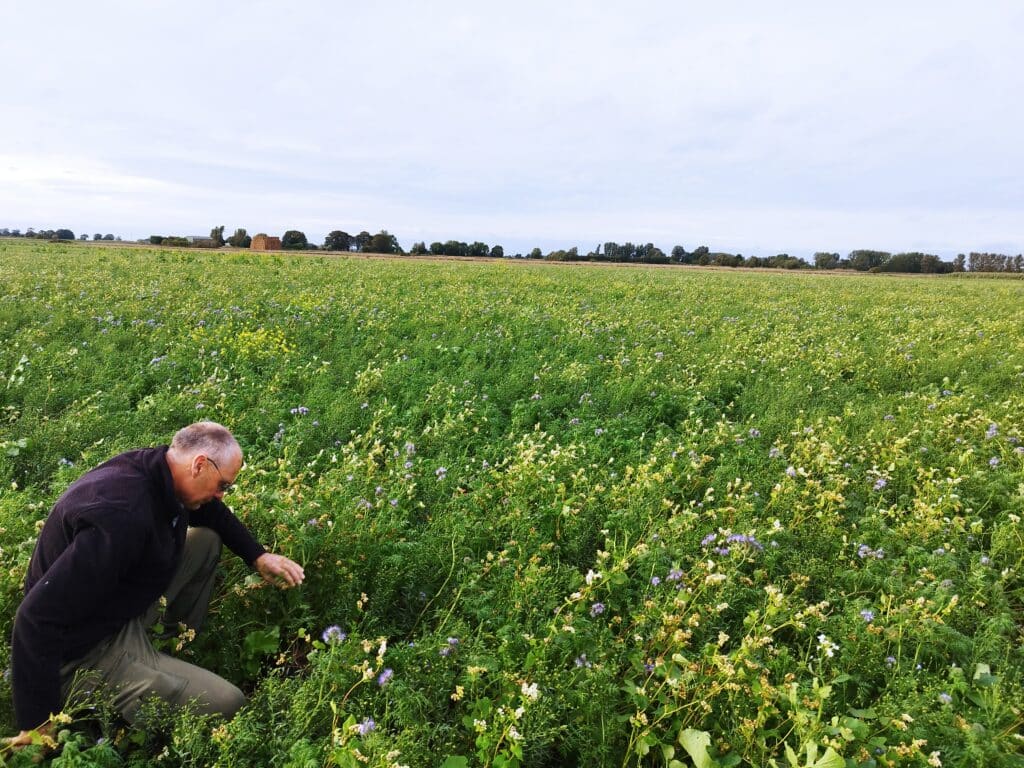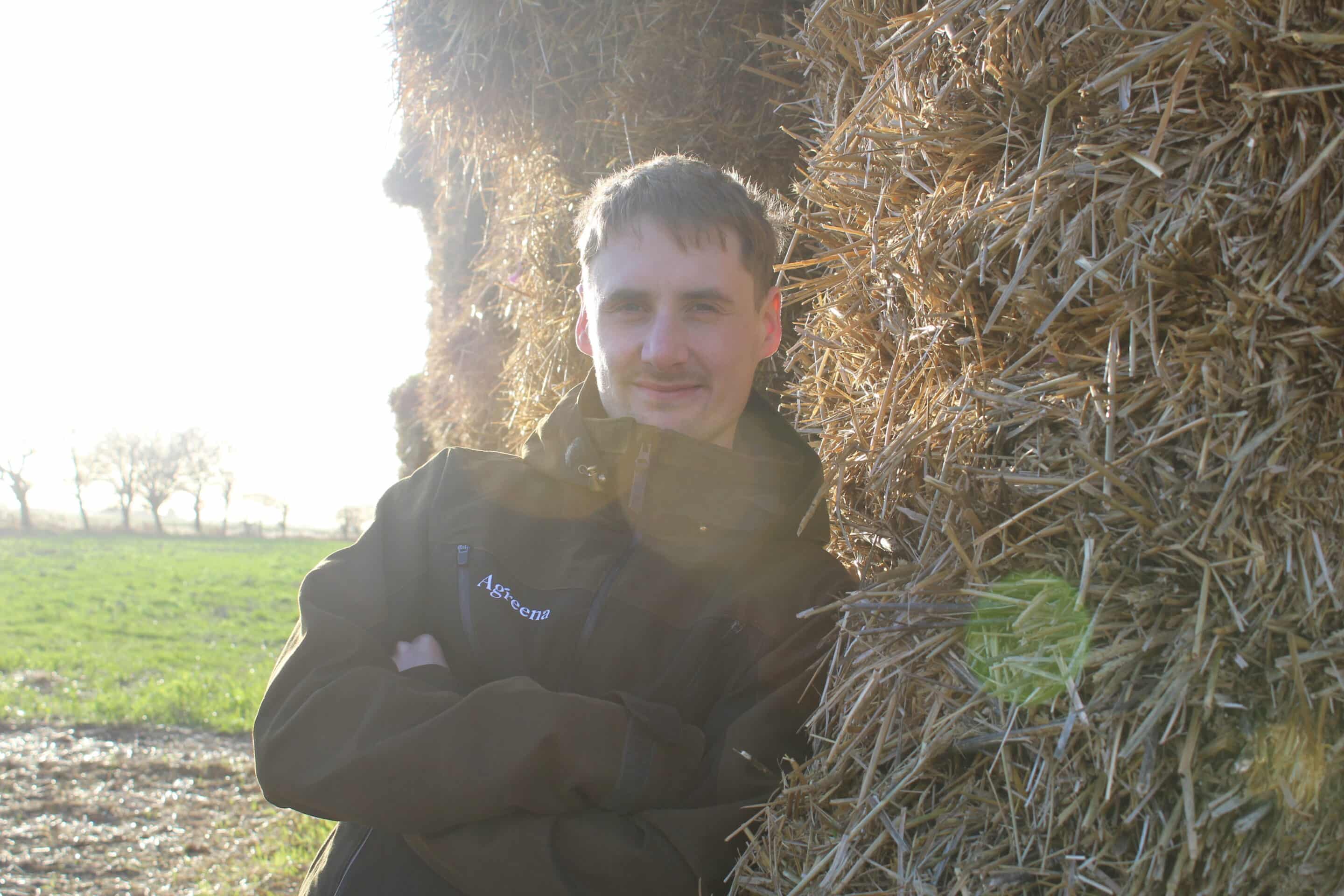- Groundwork
- Market Engagement
- Groundwork
- Market Engagement
Summary of the Gent Family Farm
Thomas Gent is a fourth generation family farmer who manages land regeneratively on his family’s 800 ha mixed arable farm in South Lincolnshire. Thomas is currently working with the carbon program Agreena to quantify and sell soil carbon certificates generated on the farm. Despite the farm’s soils being in good condition as a result of regenerative practices, Gent is still able to generate and sell soil carbon certificates as he has implemented further use of cover cropping and the addition of organic matter across the farm.
Farm Profile:
- Location: South Lincolnshire
- Size of Farm: 800 ha
- Tenancy & Ownership: Owner Occupied
- Nature Market Focus: Soil Carbon
- Interventions: Direct drilling; cover crops and catch crops; reducing artificial inputs
- Project Partners: Agreena
Acknowledgement
With many thanks for his time and insight
Thomas Gent, Fourth generation farmer and UK Country Lead at Agreena
Date Published: 19/11/2023
Key Takeaways
- The Gent family had been farming using regenerative practices for 15 years before they started measuring their soil carbon to sell certificates . Despite their soils being in relatively good condition, the family is still able to generate and sell certificates
- The Gent family works with Agreena, a Denmark-based carbon certificate program to measure, quantify and market their soil carbon certificates
- The Gent family focuses on three regenerative practices:
- Minimizing soil disturbance through direct drilling
- Maximising soil cover through cover and catch crops
- Reducing artificial inputs wherever possible and adding organic matter
Why did the Gent family decide to sell their soil carbon?
The Gent family had been managing their farm using regenerative practices for over 15 years and thus, the farm’s soils were in quite good condition before the family embarked on selling soil carbon certificates. During the Covid-19 pandemic, Thomas Gent, a fourth-generation farmer became interested in quantitatively measuring the condition of the soil and the impact of the regenerative practices the family had been using. He aimed to see if they could derive some financial benefit from quantifying sustainably managing the soil beyond selling agricultural products.
Thomas initially set out to measure the state of his soils independently but soon came to the conclusion that using a third-party intermediary to quantify and ultimately sell his soil carbon would be far easier for the farming business. Thomas researched and approached several companies before settling on Agreena, a Denmark-based CO2e certification programme and carbon certificate broker.
Thomas Gent was the first UK farmer to use Agreena and has since begun working for the company to expand the business in the UK.
How did the Gent family decide on practices which would increase their soil carbon?
The Gent family had been managing their farm regeneratively for over 15 years by the time Thomas set out to monetise their impact through soil carbon markets. However, once Thomas began studying regenerative farming more seriously, he began to focus on three main areas of interventions to maximise the farm’s soil health. These practices form the basis of Agreena’s farm management and carbon certification methodology. Focusing on these three areas allows the Gents to maximise their annual carbon certificates whilst improving the state of their soil and decreasing their input costs.
-
- Minimise soil disturbance
When Thomas’ grandfather began managing his farm regeneratively, there were few options for direct seeding available to him. As a machinery designer, he took the task on himself and designed what became the Gent Disc, a now patented, low-disturbance seeding machine which the family now licences throughout the world . The family now uses the machine across the farm to minimise soil disturbance through direct drilling .
-
- Maximise soil cover
The Gents ensure maximum annual soil cover by planting catch crops and overwinter covers to minimise carbon losses from the soils and decrease erosion. The farm includes legume and herbal-rich leys which they implemented as part of their Mid-Tier Countryside Stewardship scheme and also plant grazing cover crops through an arrangement with a local sheep grazer.
-
- Reduce artificial inputs
The third regenerative principle the Gents apply on their farm is reducing artificial inputs and replacing them with organic inputs wherever possible. The Gents do not apply insecticide on their fields and have significantly reduced their application of fungicide. Where possible, they have increased the use of manures in place of synthetic fertilisers working with a local AD plant.
What is the role of Agreena at this stage?
The Agreena system estimates the number of certificates by modelling and measuring the impact of different farming practices on soil carbon. Once the certificates have been quantified, farmers are able to choose what to do with them. They can keep a portion or all of their certificates to evidence their own environmental impact, allow Agreena to sell the certificates on their behalf, or keep their certificates to sell directly to buyers. The Gent family chose to sell their credits through the Agreena platform in the first year.
Lessons Learned
- Get a good understanding of the market and options available before jumping in
- Read contracts in detail to ensure you are fully happy with what is being laid out
- Utilise the carbon certificate income to the benefit of your business whether that is selling your grain for a premium or using the money to further your transition


